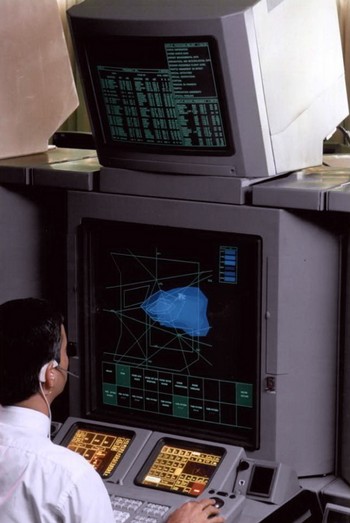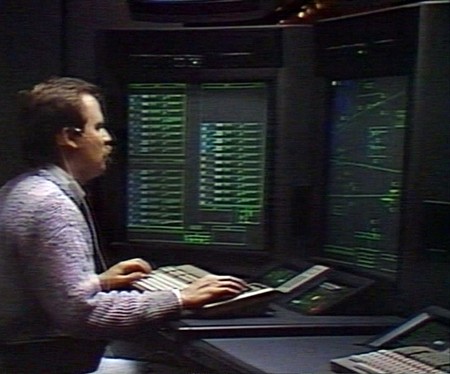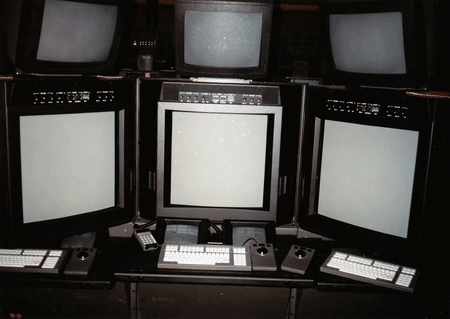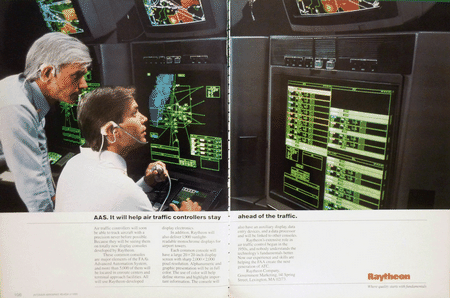The Advanced Automation System (AAS) Initial Sector Suite System A Catastrophic Failure With Billions Lost | ||
Rick's Story With The Advanced Automation System In July 1988 the FAA awarded a contract to IBM for the development and production of the Advanced Automation System (AAS) (subsequent prime contractors were Loral and Lockheed Martin). AAS would replace computer hardware and software as well as controller work stations at tower, terminal, and enroute facilities and allow the ATC system to accommodate forecasted large increases in traffic through the use of modern equipment and advanced software functions. This was to be the centerpiece of air traffic modernization. The FAA customarily creates user teams to support the fielding of large scale projects and the AAS was no exception. I was selected as a charter member of the national Support Software Requirements Team (SSRT). This team was a cross-section of representatives from different disciplines. I was the only center controller on the team and having a background in automation was a big plus. The Initial Sector Suite System (ISSS), was to be installed at all enroute centers and to provide state-of-the-art color displays, new consoles and software, and modern communication networks. ISSS was a critical segment of AAS since it would provide the hardware and software platform for later segments under development. We changed horses in mid-stream twice by switching prime contractors. Effective March 1, 1994, IBM sold its Federal Systems Division to Loral Corporation. Then in April 1996, Lockheed Martin acquired Loral and was responsible for completing work on DSR. The same people were in the same places just wearing different employer hats. It seemed like no one wanted to handle the hot potato. Software development proved to be the Achilles’ heel of the AAS program. At the time, AAS software ranked among the most complex software development projects in the world and was expected to operate in a real-time environment in which hundreds of functions must be executed within seconds and was expected to be fault tolerant. Almost immediately things started to go wrong. I didn't want to be like those elder controllers that fought the initial radar data processing with the CDC introduction and thought the project doomed to failure. But that's exactly what happened and how I felt. The FAA didn't want to hear anything negative about their centerpiece project and dealt with their typical method of receiving bad news - kill the messenger. The FAA wanted the system to be perfect out-of-the-box and wasn't willing to hold back requirements changes even as the code was being written. People involved in the project quickly became frustrated with the futility of arranging deck chairs on the Titanic. In 1994 the program was restructured: the terminal part was cancelled; the tower part was descoped; and the ISSS became the Display Replacement System. We basically got a glass PVD. Read the objective report below: | A Prototype ISSS Console  The auxiliary monitor could displayed charts, approach plates, SOPs and any other digitized data. A control position could be configured to contain from 1 to 4 consoles, used either in-line or wrapped. Hence the term Sector Suite.  This is a picture of a two console suite with a left wrapped display. An ISSS Control Area Look familiar? ISSS was restructured to DSR. Basically a glass PVD  The FAA built an $8 million Demonstration Development Facility (DDF) in Gaithersburg, Md., so controllers and engineers can work together. At issue is not so much their cooperation but rather the dedication of a whole facility just to mitigate risk. | |
 Control position with 3 console Suite |  Raytheon AAS AD | |
AAS - Ricks Career With ATC
Rick's Career
With Air Traffic Control

Rick's Career With ATC